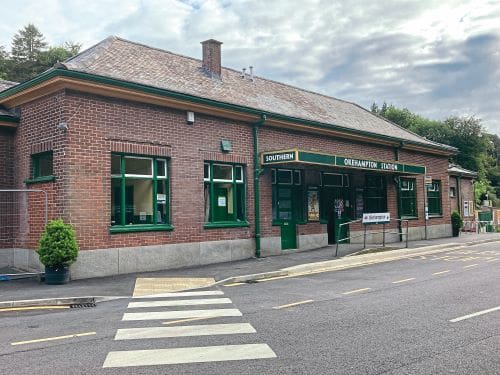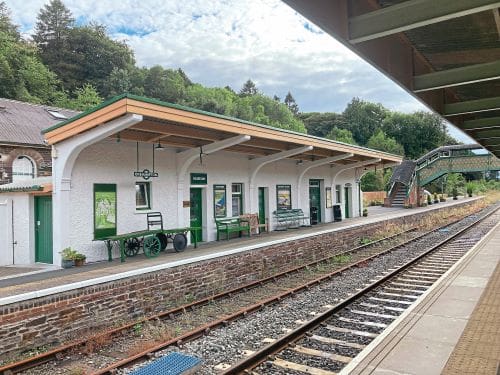November 20 of last year marked the first anniversary of the Dartmoor Line between Exeter St Davids and Okehampton reopening to regular timetabled rail services. Andy Coward travelled to Devon to meet Tom Baxter, of the Dartmoor Railway Association, to find out more about the line and how the association is supporting Great Western Railway in promoting the revitalised railway.
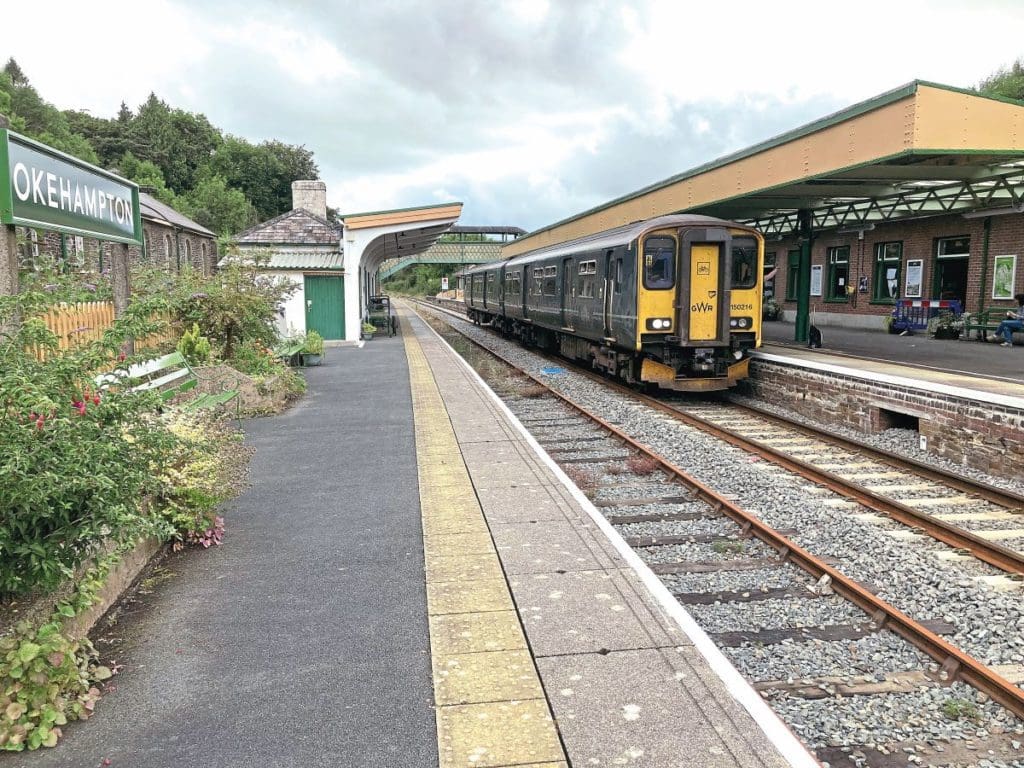
Boarding a train from Exeter St Davids to the West Devon town of Okehampton is something that – prior to November last year – could only be done on summer Sundays for many years.
However, the reopening of the Dartmoor Line almost exactly a year ago, in a collaboration between Network Rail, Great Western Railway, Devon County Council and various other local organisations, has seen it become the first line to be successfully brought back into regular use under the Government’s Reopening Your Railway’ initiative – and it has proved to be a huge success so far.
Enjoy more Railways Illustrated Magazine reading every month.
Click here to subscribe & save.
The road to returning regular train services to the attractive town on the edge of Dartmoor National Park has not been easy. There have been plenty of bumps along the way for the residents and supporters who have been actively campaigning to return regular train services for many years.
I found myself travelling on a Class 150 DMU along the line to Okehampton to meet up with Dartmoor Railway Association secretary Tom Baxter and find out more about the Dartmoor Line and how the DRA’s role has changed in recent years, from providing volunteers to help operate a heritage railway to one that is now essentially a support group that is actively involved in promoting both the recently reopened railway and Okehampton station itself. The DRA still also has an interest in restoring a heritage service from Okehampton to Meldon Viaduct station in the future.
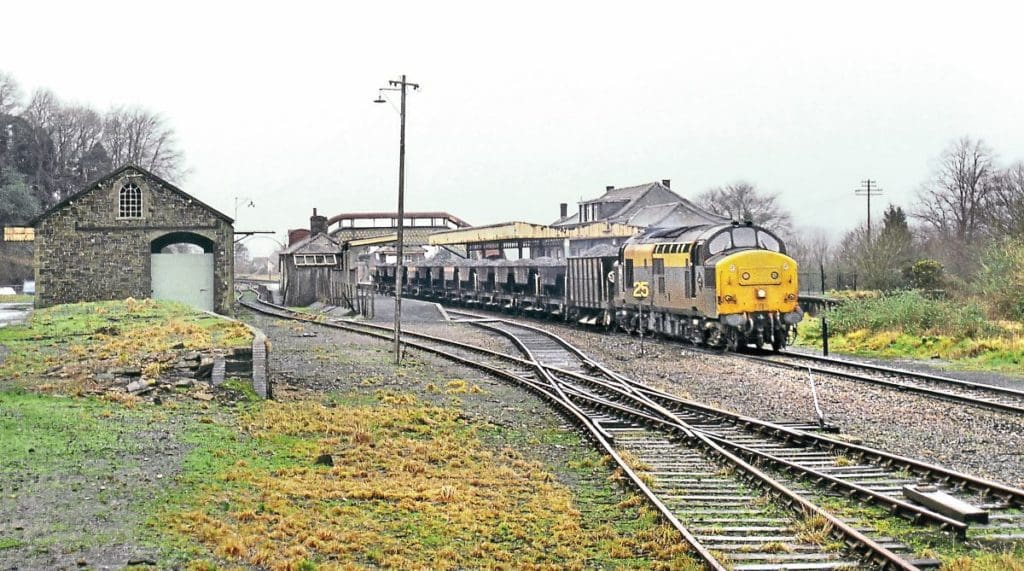
Okehampton never disappeared from the rail map completely, although for many years the line through the town’s station operated as a freight-only route to the nearby Meldon Quarry following closure of the route to passenger traffic by British Rail in June 1972. Having escaped the attention of Dr Richard Beeching, it was subsequently selected as a line that could be removed from the passenger network.
The line was sold by BR to Aggregate Industries during the rail privatisation era and has seen many changes in the 50 years since, including a prolonged period in use as a private and heritage railway operation – the Dartmoor Railway – with the restored Okehampton station becoming the focal point of the operation.
In addition to the heritage trains operated on sections of the line, summer Sunday services, supported by financial assistance from the local council, saw four return passenger services operate between Exeter St Davids and Okehampton each week, giving a tantalising glimpse of what was to come. Eventually.
The association
It’s probably fair to say that the volunteers and supporters of Dartmoor Railway Association have had a very mixed experience over the past 25 years since sections of the line between Coleford Junction and Meldon Quarry reopened as a heritage operation. At times it’s been something of a rollercoaster ride.
The first company to work alongside the DRA was Ealing Community Transport, which operated the line as a heritage and community railway. It also owned various railway maintenance companies and operated heritage and community services on the Weardale Railway.
For the Dartmoor Railway, the operating legal entity of the organisation was the ECT-controlled Dartmoor Railway Community Interest Company.
However, ECT decided to withdraw from its rail interests in 2008 and the various railway companies that had been owned by the organisation were sold off.

After ECT came Iowa Pacific Holdings-owned British American Railway Services (BARS), which took over both the Dartmoor Railway CIC and also the Weardale Railway in the North East, along with most of the other former ECT rail assets.
However, despite very successful initiatives such as the Polar Express and The Train to Christmas Town operations each year bringing in thousands of visitors to Okehampton, the owning company got into financial difficulties. At the start of 2020 the Dartmoor Railway CIC went into administration and the Dartmoor Railway closed, bringing to an end almost 23 years of train operations and creating a lot of uncertainty for the DRA volunteers who had worked so hard alongside both ECT and BARS paid staff to make the railway a success.
Ultimately it was the failure of BARS parent company Iowa Pacific Holdings that brought about the end for the Dartmoor Railway, but that did little to ease the concerns of volunteers who had invested much of their own time and money into the railway – and who also had a close affinity with the line.
Tom explained: “It was such a sad and uncertain time when the railway was placed into administration. On that morning, the station had been opened up as usual, with the café selling breakfasts, but the administrators arrived and the Dartmoor Railway paid staff working here were all made redundant with an hour’s notice and the locks on the buildings were changed.
“We came to the station to meet the administrators and they immediately tried to order us off the premises, but we explained that we held a separate lease with Devon Country Council for the buildings on Platform 2, so they couldn’t lock us out of our own premises, which they eventually accepted.
“I think they quickly realised that there weren’t that many assets here that they could sell off, as the railway was owned by the aggregate company and the station was owned by the council. But the whole administration situation was so desperately sad after everything that had been done to keep the railway running.”
Green shoots
Shortly after the Dartmoor Railway was placed into administration, the first coronavirus lockdown came into force. Locally-based DRA volunteers carried out daily security patrols of the station to ensure that it didn’t suffer attention from unwanted visitors.
The first signs that something might be afoot regarding the future of the line came when a gang of Network Rail staff were spotted conducting survey work along the line close to Okehampton station. Shortly afterwards a huge mountain of 20,000 concrete sleepers arrived at Okehampton, supposedly for storage.
Tom and his DRA colleagues had unofficially been let in on the secret that moves were underway to investigate reinstating services along the route, but the news had not been announced publicly, so the arrival of such a huge quantity of permanent way materials created a fair bit of interest among locals.
Had the scheme not gone ahead, the sleepers would have eventually been reloaded onto trains and moved for use elsewhere on the network – but this is a story with a happy ending.
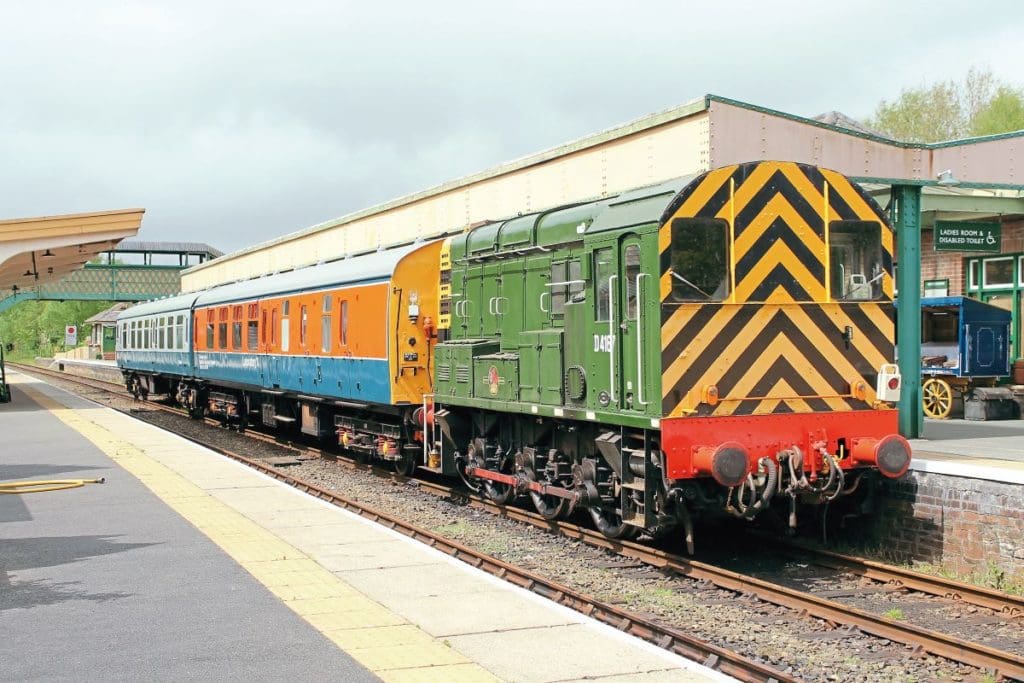
In March 2021 it was announced that funding had been approved for the line to be reopened under the Government’s Restoring Your Railway fund, with the line being transferred to Network Rail. A huge programme of upgrading works got under way immediately. Just eight months later, the line was successfully reopened and Okehampton was officially back on the national passenger rail network for the first time in more than 49 years.
Tom said that the NR staff they encountered during the rebuilding were all excellent. The work done had certainly created a buzz around the town, he added, and the reopening of the line has also opened up the area to much better transport links. The station is a short distance away from the town that bears its name, and a bus service now links the two. The station also features a large car park on land that was previously occupied by an engine shed and yard.
Enhanced frequencies
An initial service every two hours was launched following the reopening, and service frequencies were enhanced after the completion of upgrading works on the line by Network Rail over the winter by the introduction of the May timetable change.
All trains between Exeter and Okehampton also call at Crediton, but other stations along the line to Okehampton haven’t been reopened and there are currently no plans to reopen any of the intermediate stations, although it is possible that a new Okehampton Parkway may be opened at some point. A bid has been submitted under the Government’s New Stations fund, and a response is shortly hoped for.
The two-hourly service frequency allowed a railtour hauled by top-and-tailed Class 50s to traverse the railway and visit Okehampton, but the improved service frequency introduced from the May timetable change no longer allows sufficient capacity for such charters to take place now, so it would appear that without further infrastructure upgrading works, the current frequency will remain.
The new timetable saw the introduction of an hourly service, with the first train leaving Okehampton at 07.25 Monday-Saturday and two hours later on Sunday mornings. In the evening, the last trains from Exeter leave just after 9pm and an hour later from Okehampton.
There are no freight workings at the moment and the only trains to have travelled beyond Okehampton since the Dartmoor Railway closed in 2020 have been Network Rail works trains.
Two trains are required to operate the hourly service in use on the line and the regular GWR services are operated by Class 150 DMUs, although Tom said that Class 158s and Class 166s have worked services on occasions.
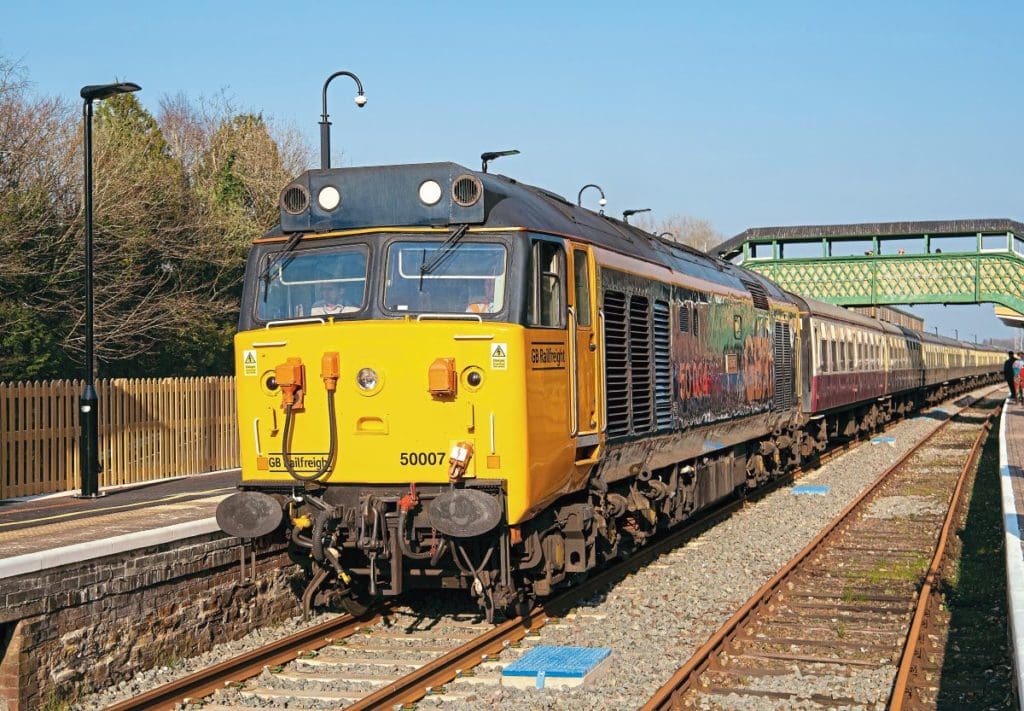
Okehampton station
When the railway closed, the station at Okehampton survived relatively unscathed and throughout the period the line was in use for stone traffic to Meldon Quarry, it remained in silent decaying slumber.
While demolition would have been the usual order of play, it never happened here and the station buildings, footbridge, signalbox and adjacent goods shed all remained – derelict, but essentially complete and almost as though someone knew that they would be needed once more.
In 1997 the buildings were restored as a forerunner to the commencement of heritage trains running through the station again. When the Dartmoor Railway reopened as a heritage operation under the auspices of Ealing Community Transport, the station became the main hub of operations and where most passengers began their journeys.
The main building on Platform 3 boasted a large refreshment room, model shop, ticket office and booking hall, as well as toilets and office accommodation. On the first floor was a small flat that was historically used by refreshment room staff.
Fast-forward to 2022 and the new-era Okehampton is now effectively an unstaffed station, with ticket vending machines and an electronic passenger information display on the one operational platform. But, to NR’s and GWR’s credit, they haven’t taken the easy option and boarded up the station buildings or demolished them. Quite the opposite.
On the day of my visit, the building was a hive of activity, with contractors finishing a very high-quality refurbishment that will see it brought back into use for passengers and tourists; the area is popular with walkers and cyclists.
The refreshment room – which back in BR days had been the parcels office – has been completely refurbished to allow the reopening of the former Bulleid Buffet. The buffet was named after famed Southern Railway chief mechanical engineer Oliver Bulleid CBE, who had a connection with Okehampton and the district. As well as his iconic locomotives travelling through the station on various services, he lived for a while after retirement in Belstone, a small moorland village close by.
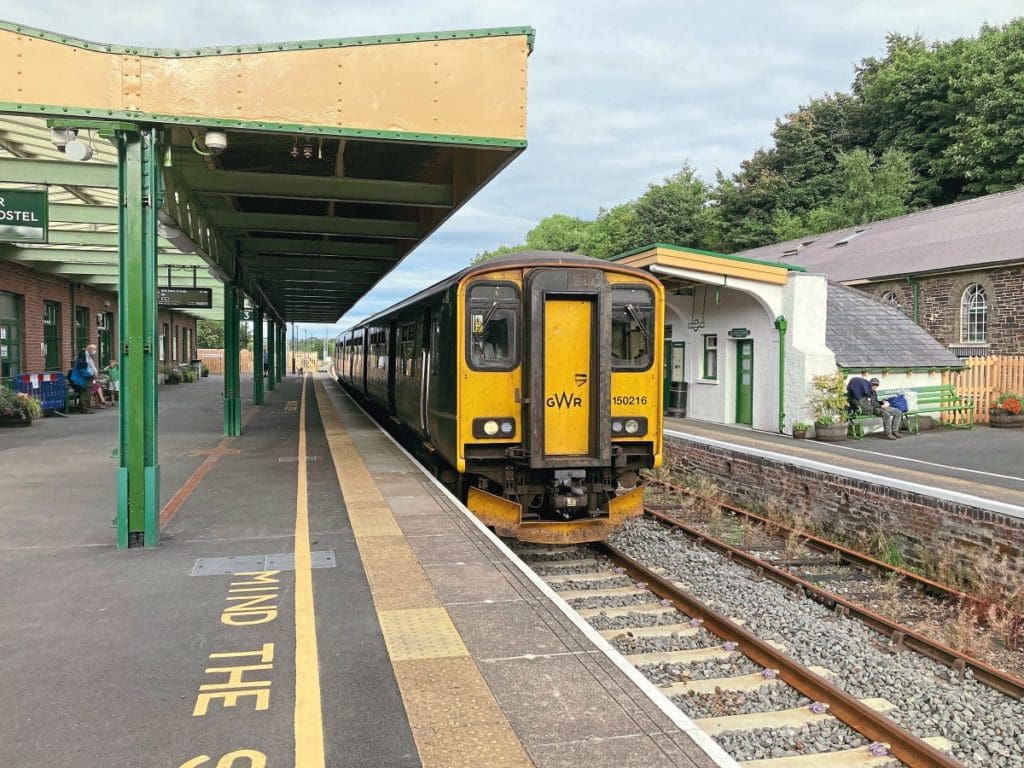
While I was there, refreshments were provided from a small catering van in the car park, awaiting the imminent move into more spacious and welcoming accommodation. The refurbished buffet has since been opened.
Moving along the platform, the next room in the station is the former ticket office and booking hall. While the ticket office was in regular use during the heritage railway operations, it is no longer needed for the new train service. However, in a project being carried out in collaboration with the Devon and Cornwall Rail Partnership, it is being restored as an authentic recreation as to how a ticket office from the 1950s would have looked. Visitors will be able to look through a side window to see the recreated scene, which will look just as if the booking clerk has popped out for a few minutes.
The booking office is now slightly smaller than it was during its previous incarnation, as some space was reclaimed during the 1997 renovations to allow the adjacent buffet to be enlarged.
The booking hall has also been completely refurbished and will retain a heritage feel, with information boards and replica Southern-style maps on display in another recreation that will seamlessly merge old and new. Again, looking through the open doorways as the contractors worked on completing the project, the standard of work carried out looks to be excellent; this is clearly far more than a re-skim of the plasterwork, a rewire, and quick lick of paint.
On the other side of the booking hall to the café will be a National Park Information Centre, housed in a room that many years earlier was a WH Smith – the shutters from its days as a book stall remain in place and still work.
Moving along the platform, the next room being refurbished will be the new DRA shop, which will help to give the association additional income, while also providing further interest and offers for passengers waiting for trains.
Even more facilities
An indoor waiting room is also being provided, which will be equipped with Southern-style wooden benches to protect people from the elements during inclement weather, although the platforms are also covered by a large canopy for times when the station building will be closed and locked.
The station also has toilet facilities, which will be open throughout the day, and these too have been refurbished in a complementary heritage style, although some compromises have had to be made to comply with current-day legislation.
The refurbishment really is an excellent job and even though it wasn’t finished on the day of my visit, it was clear that a lot of money has been invested in providing a quality facility that befits the town it serves. Okehampton is like no other unstaffed station I have previously visited on my travels.
On Platform 2, the DRA also retains the buildings still in DCC ownership. These are currently used by volunteers, and there is also a fascinating small exhibits museum, named after the last Okehampton station master, Arthur Westlake.
Mr Westlake did much to preserve the station after its closure to passenger services. Continuing as station manager and goods agent for the remaining freight traffic into Okehampton depot, he also encouraged the running of various special trains and charters during that time.
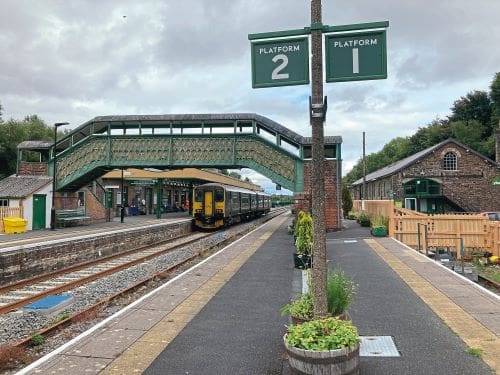
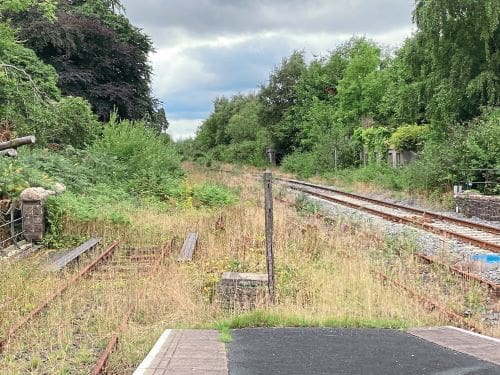
At the Meldon end of Platform 3 is the former signalbox. No longer operational, it was previously used as the control and equipment office for when the now-defunct Dartmoor Railway was operating.
Currently used a store, the signalbox adds to the charm of the station, which – apart from some of the compromises required on modern stations – feels like it is stuck in a time warp.
There is a possibility, Tom said, that the signalbox could be incorporated into the heritage lease area and be used as a further museum facility, but at the moment it is owned and controlled by Network Rail.
The goods shed also survives and has now been converted into very successful Youth Hostel Association accomdation, which is popular and well-used throughout the year by people visiting and exploring the area.
The station is very much set in the Southern era, with a nice mix of new heritage station target signs and running-in boards alongside contemporary GWR signs.
The DRA has also been awarded the cleaning contract for the station by GWR, which Tom said has provided it with a useful regular source of income and shows further support from the train operator to the DRA and its dedicated band of volunteers.
Tom praised GWR for the way it has interacted with the DRA since taking over the station. “It has been incredibly supportive of ourselves and also the revival of the railway, as has Network Rail,” he said.
“They realise that they have an asset here that they can build on and they have been careful to get the balance right between the old and the new.
“Although the railway now is very different to how it has been over the last 25 years, both Network Rail and GWR have respected the heritage of the line – and especially the station here.”
GWR services at Okehampton only use Platform 3, with the other two platforms isolated from the GWR trains. On the day of my visit, the two lines serving the out-of-use Platforms 1 and 2 had an increasing number of weeds taking over, giving a rather unloved feel to that side of the site.
As the line is now owned by Network Rail and is considered an operational live railway at all times, the clearance of weeds on the track is something that DRA volunteers cannot do. With all the investment that has been put into getting the station refurbished, it seems a shame that a visit by a weedkiller patrol can’t be arranged.

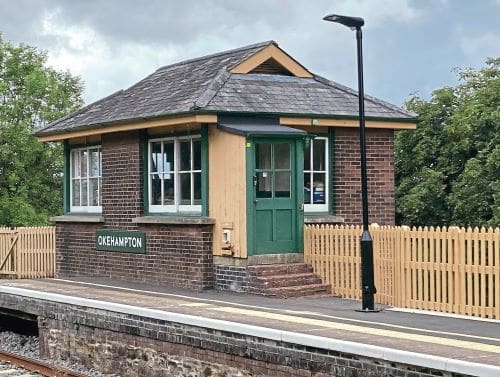
Onwards from Okehampton?
So, is the prospect of operating the two-mile section of line beyond Okehampton to Meldon Quarry as a heritage railway operation now dead and buried?
“Not as far as we are concerned,” replied Tom. “We have dropped some hints to Network Rail and GWR about operating a heritage service from Okehampton to Meldon Quarry at some point. They don’t seem opposed to the idea but it certainly isn’t something that will happen in the near future.
“The main challenge for us is that we would need to set up a completely new railway company to run a heritage operation, together with all the associated requirements and, even though it would be a relatively simple method of operation up to Meldon and back, we now only have a very limited amount of rolling stock left on site. Realistically we would probably need to partner with another railway heritage organisation to achieve success.
“The way that GWR services operate into Platform 3 at Okehampton means that they are isolated from the other two platforms, so there is no particular reason why a heritage service couldn’t work using Platforms 1 and/or 2, completely segregated from the main timetabled services, with the station becoming an interchange between the two. This of was the accepted method of working under the Dartmoor Railway.”
“The station at Meldon Viaduct is still there and is regularly visited by DRA volunteers, and we have made our remaining coaches as secure as possible, but we would certainly like to see some sort of heritage service operated between Okehampton and Meldon again.
“Meldon has much of interest, including the iconic Meldon Viaduct, good walking routes onto the moor, Meldon Dam and reservoir, the railway quarry, various other quarries, and industrial archaeology all of note.”
Most of the locomotives and rolling stock used during the BARS period of operation have now departed, either to new homes or sold for scrap, leaving the DRA with just a couple of coaches and brake vans belonging to the association and a Class 08 shunter belonging to the quarry.
The reopening of the line has been a success and the campaigners who worked so hard to see it brought back into use have been rewarded with a regular train service between Exeter and Okehampton, which has attracted a lot more people onto the trains than was originally thought.
For the volunteers of the DRA, their role in the success of the line is just as important as it ever was, although they are more of a support group and station adopters now, rather than the operational heritage volunteers they once were. However, it is great that both NR and GWR have embraced the purpose of the DRA as a support organisation for the line.
Whether the line to the currently mothballed Meldon Quarry ever comes back into use again remains to be seen, and if so, in what format is also an unknown quantity.
The reopening of the Dartmoor Line has been a successful launch pad for the Restoring Your Railway initiative and I look forward to visiting Okehampton again in the future – by train.


